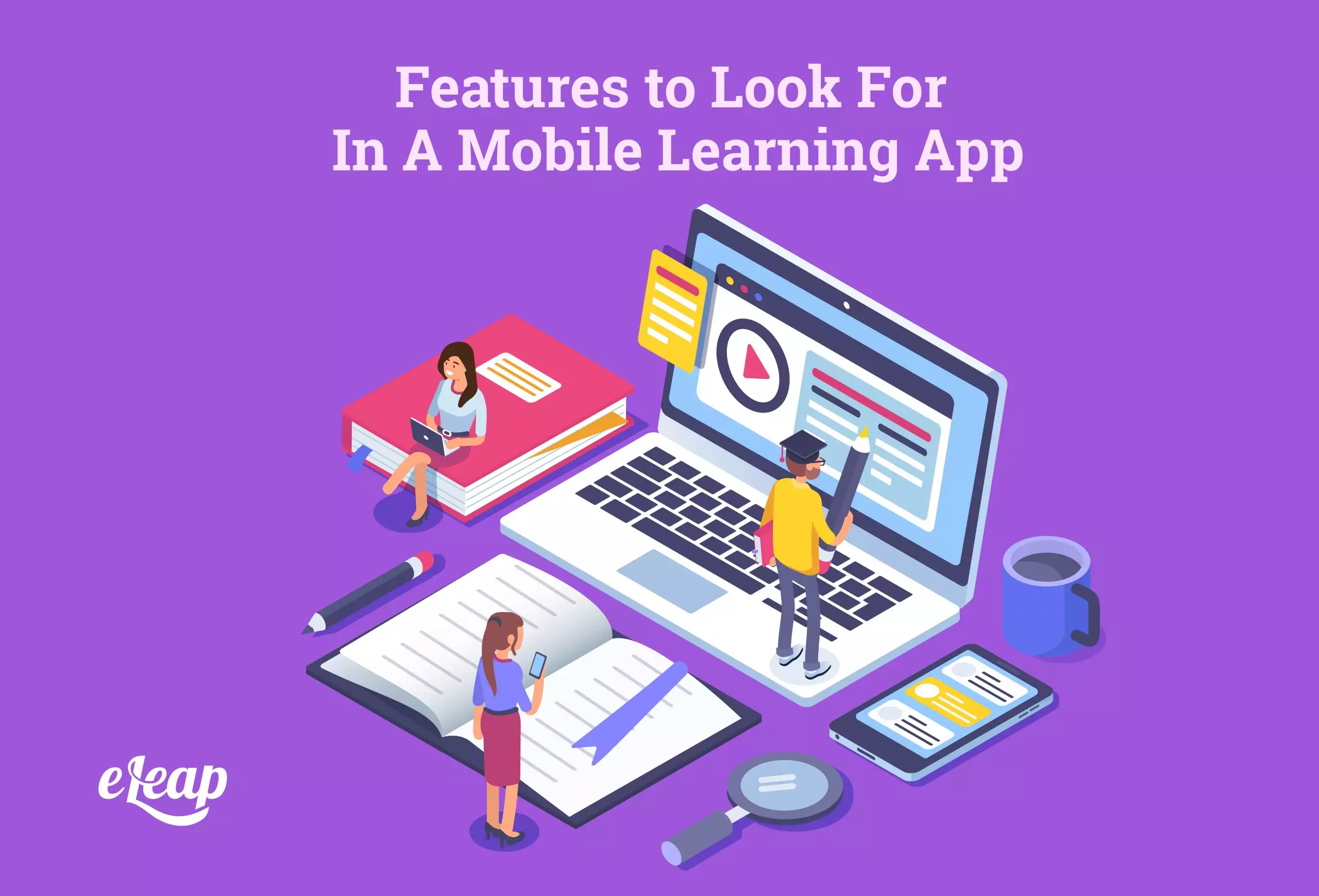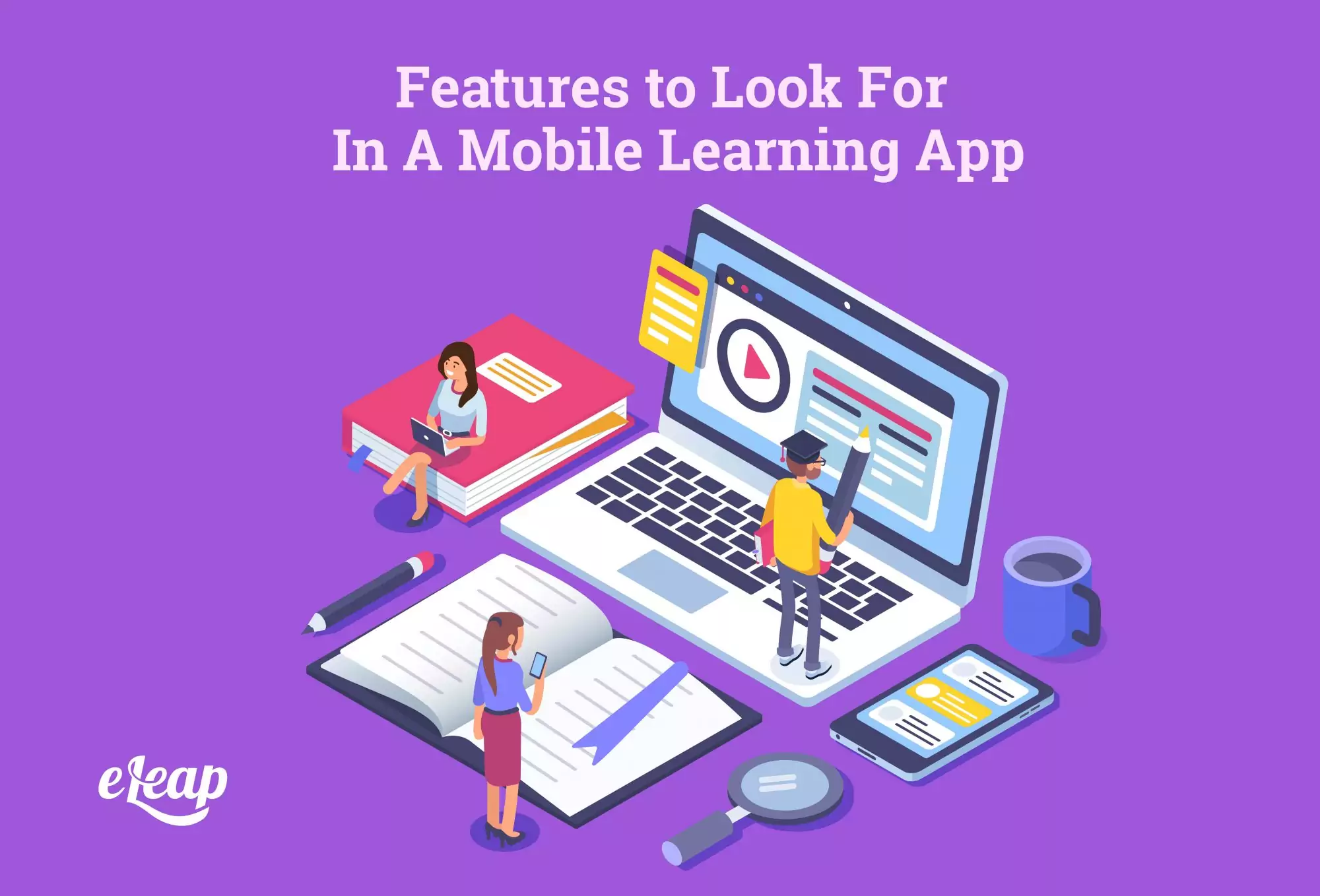Features to Look For In A Mobile Learning App

Mobile learning or m-learning is a form of distance education, that uses mobile device educational technology at the time that is convenient for a user. These days, fewer employees are in the office, more employees are remote, and no one uses print-out materials for training anymore. Mobile learning platforms are a critical training component, as they give you the flexibility to provide employees with eLearning no matter where they are located. But with that being said, mobile learning apps vary wildly in their functionality and effectiveness. These days, there’s a plethora of mobile learning apps available, so how do you select which one is right for your organization? Which mobile learning app will provide the most effective learning experience for employees?
Mobile learning apps may differ greatly in what they offer, but they should have some basic features that enable proper training and development opportunities. Not all employees will be in the office to have access to learning materials at all times, hence the importance of a good mobile learning app. Particularly these days, with so many employees still working from home or transferring entirely to remote work, mobile learning apps need to have the functionality to assist them with learning from home. The right app will be effective for all employees, essentially, it will offer broad-spectrum functionality. So, when choosing a mobile learning app what features should you pay the most attention to?

Features of Mobile Learning Apps
User Interface
Without a friendly user interface your employees will struggle to use the app. Consider the fact that many employees may not be especially tech-savvy, which is going to set them back in their learning if an app isn’t easy to use. Employees will quickly get fed up with a mobile learning platform that isn’t straightforward and simple. Opt for mobile learning apps that have intuitive user interfaces with visuals that are engaging and not cluttered in their appearance.
Gamification
There are numerous studies on the ways in which gamification can assist with learning. Games are certainly not only for children, but they can also help employees to learn better too. Gamification provides a massive opportunity for mobile learning apps to improve retention rates and understanding. Games are also a good way of increasing motivation to learn. In many instances, engaging in training through a mobile app platform is something that employees will do of their own volition. Gamification can help to bolster motivation and encourage learners to study hard and stay on track.
Multimedia Content Support
If you try and use such app that supports only one type of media, you’ll be doing yourself and your employees a disservice. Multimedia content can help engage learners and better educate them. One type of media is very easy to get sick of, and different individuals respond to various types of media learning in differing ways. While some employees might love flashcards, others probably find them tedious and would respond better to a video. Furthermore, some lessons may not be suited to, for example, bulk text or video learning, making diversity in media content critical. A mobile learning app should be varied in the type of media that it can support. Consider apps that have options for videos, gamification, quizzes, flashcards, and bulk text when necessary.
Push Notifications
Let’s be honest, your employees are probably going to need reminders about training. They’re busy so push notifications can be a valuable feature for a mobile learning platform. They can help learners to remain organized and prevent them from missing important training notifications. They’re also beneficial in communicating important information instantly since they’ll show up on the home screen of most smartphones without the employee even needing to open the notification.
Communication
Remote employees are probably suffering from a lack of communication with coworkers. Learning on a mobile platform is undoubtedly very beneficial. But it can also feel very isolated if the platform doesn’t offer in-app communication. Employees who can support and learn from one another through the platform, feel motivated and retain information better. They can also bounce ideas off of each other and use one another as a learning support system or to ask questions. In-app communication will also encourage employees to share conversations and discuss training topics.
Progress Syncing
There’s nothing worse than completing an entire training session only to momentarily lose connectivity which causes your progress to disappear. It’s not very motivational and can be downright frustrating. So, it’s important that any platform you choose has progress syncing so employees don’t lose their place. It’s beneficial for learners who switch between different platforms, as their progress will be updated when switching device.
Offline Learning
Mobile learning is great, but if it can’t be accessed online, learners may run into discouraging problems. Many employees may utilize these platforms when they don’t have access to Wi-Fi. Consider situations such as learners who use their commuting time to utilize the mobile learning app. If it doesn’t support offline learning, they can’t use the app offline. Employees should have easy access to downloadable content that they can view at any time and from any location.
In our contemporary eLearning world, the options for such apps are endless. There are so many options to choose from that the choice can be extremely overwhelming. What functions do you prioritize? What will help your employees learn the best? Many features will be a personal decision based upon the needs of your individual organization. But aforementioned features are critical components for any mobile learning app.